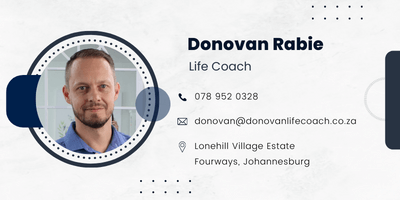
Even though burnout is not a medical diagnosis or mental illness, it is described as a phenomenon that negatively influences an individual’s health and well-being and is a common reason for people requiring time off from work and/or consulting with a health professional due to its impact on their physical, mental, and emotional well-being.
As a life coach, I see this all the time, which prompted me to do further research and write this article. This article will discuss what burnout is, the 3 signs of burnout, the 5 phases of burnout, and the 3 most important steps to help you recover from burnout.
In This Article
ToggleWhat is Burnout?

Did you know that a staggering 76% of people will experience some form of burnout during their careers? A 2020 Gallup report stated that 76% of employees experience burnout on the job at least sometimes, and 28% say they are burned out “very often” or “always” at work.
Burnout is generally associated with workplace stress and an unbalanced work-life routine but factors such as parenting and social activism can also lead to burnout, especially when care is involved and one is constantly dealing with ongoing demands, unceasing expectations and/or unobtainable deadlines.
Additionally, a lack of psychological safety in the workplace can lead to burnout. The term “psychological safety” describes the shared conviction that team members or group members can openly and honestly communicate their views, ideas, and problems without worrying about embarrassing, retaliatory, or isolating repercussions. The lack thereof can have serious consequences on an individual, one of them being burnout.
The International Classification of Disease (ICD-11) defines burnout as a set of physical/mental symptoms that develop when chronic workplace stress is not successfully managed.
10 world-class mindset shifts that will…
~ Accelerate your success.
~ Bring out your inner genius.
~ Create a lasting impact on your happiness.
Price From: $11.49
The 3 Signs of Burnout
Originating during the 1970s by the American psychologist, Herbert Freudenberger who described the fatigued state of medical professionals as appearing “burned out” from their overwhelming working conditions.
3 distinct signs will indicate burnout. They include exhaustion, depersonalisation, and reduced performance (diminished efficacy).
- Exhaustion or a chronic state of fatigue that is felt on both a physical and mental level where the individual feels too drained and depleted of energy to cope with incoming demands.
- Depersonalisation or a feeling of (self) alienation from activities, characterised by apathy, mental/emotional numbness, and indifference. This is also often associated with cynicism, reduced capacity to effectively communicate, and increased hostility toward self and/or others.
- Reduced performance or diminished efficacy is characterised by diminished output capacity, lack of creativity, decreased concentration, and poor memory.

The 5 Phases of Burnout
Burnout is not merely a single state one finds themselves in. It is an experience that develops over time and through phases as the individual becomes more overwhelmed by external stressors.
The various stages include the honeymoon phase, the onset of stress phase, the chronic stress phase, the burnout phase, and the habitual burnout phase.
- The honeymoon phase is an optimistic phase that is associated with increased motivation and satisfaction, performance, and creativity. A typical example is when someone starts a new job or gets a promotion.
- The onset of stress phase happens when the novelty of the honeymoon phase starts to dissipate, the individual begins to experience the role’s related stressors and the stress is more persistent. A loss of focus and the onset of fatigue is common. It is important to be aware of one’s ability to remain productive and focused on tasks, alterations in sleep patterns, continually contemplating on work, and/or losing interest in life outside of the work environment.
- The chronic stress phase is recognised as a chronic state of overall stress that affects work as the individual continually attempts to manage expectations and output quality. Conversely, this affects time management where it becomes difficult to meet deadlines, complete tasks, and arrive for meetings on time. Procrastination becomes a more prevalent “go-to” as the person starts to distance themselves from the areas in their life that act as stressors. The person may also start becoming more irritable and snap at co-workers. They may also become frustrated and overly angry at home as well.
- The burnout phase happens when the person has reached their limit and their productivity and well-being are severely affected. Obsessing about work-related issues often becomes debilitating to the point where the individual continually doubts their competency and abilities. Physical symptoms, such as headaches, digestive issues, and overwhelming exhaustion. Behavioural problems and maladaptive coping mechanisms become more noticeable.
- The habitual burnout phase occurs when the person does not take heed to address their condition and can perpetuate issues such as anxiety, depression, and substance misuse. Chronic mental and physical fatigue becomes the person’s “normal” functioning state and can adversely affect memory, attention, alertness, and cognition.
3 Important Steps to Help You Recover from Burnout
Burnout can take any from 11 weeks to several months or even a few years to recover, largely depending on the person and the phase of burnout they were in when they began remedial action.
Therefore, it is critical to identify the signs and symptoms of burnout and become aware of how one is affected by stress, workload, expectations, uncertainty, perfection, and criticism. Then, if burnout is suspected it is important to do the following to ensure that long-term damage is prevented, and balance is restored.
Step 1. Acceptance and rest. Having self-awareness and compassion for how one is impacted by the need to exceed one’s own limits is a crucial first step. Take some time out to rest and recover.
Step 2. Causes and solutions. Actively seek to understand which factors are contributing to the issue and address them head-on. Learn to say no, delegate more effectively, dump inactive tasks, and avoid worrying about things beyond your control.
Step 3. Change your lifestyle. Adjust your lifestyle so that it is more conducive to your needs and that enhances a more work/life balance approach. Consult with a life coach to assist with this.
Conclusion
This article discussed what burnout is, the 3 signs of burnout, the 5 phases of burnout, and the 3 most important steps to help you recover from burnout.

Interested in what I do?

Donovan – Life Coach – 078 952 0328









